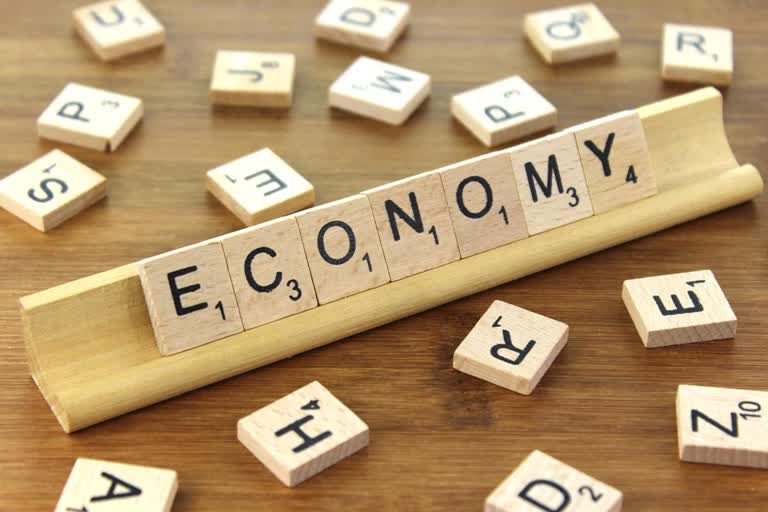Business Desk, ETV Bharat: Amid the rising number of Covid-19 cases, there is some positive news on the economy front.
As the National Statistical Office (NSO) is set to release GDP numbers for the October-December quarter on February 26, experts believe that the Indian economy will shed its recession blues and land in positive growth territory.
“Led by a sharp recovery in manufacturing and services, we expect Q3 GDP to show modest positive growth at 1.1 per cent from a negative growth of 7.5 per cent in Q2 ,” says Prithviraj Srinivas, Chief Economist at Axis Capital Ltd.
Last year, the Indian economy plunged into a recession as it registered negative growth in two consecutive quarters. In fact, available data suggests that the economy never witnessed a recession before since independence.
As per official estimates, overall economic output (Gross Domestic Product) has shrunk by a massive 23.9 per cent in the April-June quarter (Q1) and 7.5 per cent in the July-September quarter (Q2) of 2021-22, in comparison to a year ago period, due to Covid-19 control measures announced by the government.
To recall, the Centre announced a nationwide lockdown last March to curb the growing number of Covid-19 cases. Termed as the strictest lockdown in the world, Covid-19 induced disruptions broke the supply chains and adversely affected demand in the economy.
However, businesses gathered pace in June as the government started easing restrictions under unlock guidelines.
Also read: Govt has no business to be in business: Modi
Factors influencing the revival
“Estimates indicate that GDP growth may have attained positive territory in the second half of 2020-21, mainly on the back of a surge in government expenditure,” said Michael Debabrata Patra, Deputy Governor of RBI, during the Monetary Policy Committee Meeting held in early February.
With regard to the growth during the October-December quarter, he further said that railway freight traffic, toll collection, e-way bills and steel consumption suggest revival in the quarter.
Echoing similar views, Prithviraj Srinivas observes that the positive sentiment is attributed to a variety of factors, including the pent-up demand in the economy.
“A combination of pent-up demand, further unlocking of the economy and acceleration in public spending have supported quick sequential growth in the December quarter,” Srinivas told ETV Bharat.
Moreover, high GST collections during the quarter lend credence to this optimism.
As per official estimates, gross GST collections exceeded Rs 1 lakh crore in all the three months starting from October. The GST collections were Rs 1,05,155 crore in October, Rs 1,04,963 crore in November and Rs 1,15,174 crore in December.
In fact, December GST collections were the highest ever monthly collections since the introduction of the tax in July 2017.
"The GST revenues during December 2020 have been the highest since the introduction of GST and it is the first time that it has crossed Rs 1.15 lakh crore. The highest GST collection till now was ₹ 1,13,866 crore in the month of April 2019," said a government release.
Also, “This is the third month in a row in the current financial year to have GST revenues more than Rs 1 lakh crore,” added the statement.
Also read: SEBI seeks detailed report from NSE of 'trading halt'
Agriculture – The lone bright spot
Notably, while the overall economic growth was faltering, the agriculture sector withstood the disruptions caused by the global pandemic and registered positive growth throughout the current financial year.
For instance, during the April-June quarter, while services and manufacturing sectors shrunk by a staggering 47 per cent and 39.3 per cent respectively, the agriculture sector registered a positive growth at 3.4 per cent.
The agriculture and allied sectors grew at the same pace even during the July-September quarter when the overall economy has lost 7.5 per cent of its output.
Commenting on the prospects for the sector, the RBI has said that agriculture is likely to maintain the growth momentum on the back of adequate water availability.
“The agriculture sector remains resilient - rabi sowing was higher by 2.9 per cent as on January 29, 2021, supported by above normal north-east monsoon rainfall and adequate reservoir level of 61 per cent of full capacity, which is above the 10 years average,” said a latest RBI statement.
Also read: Embargo lifted on pvt banks to conduct govt business



